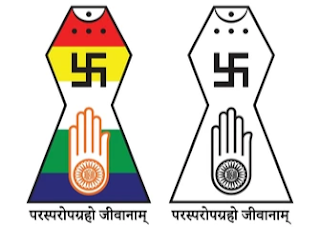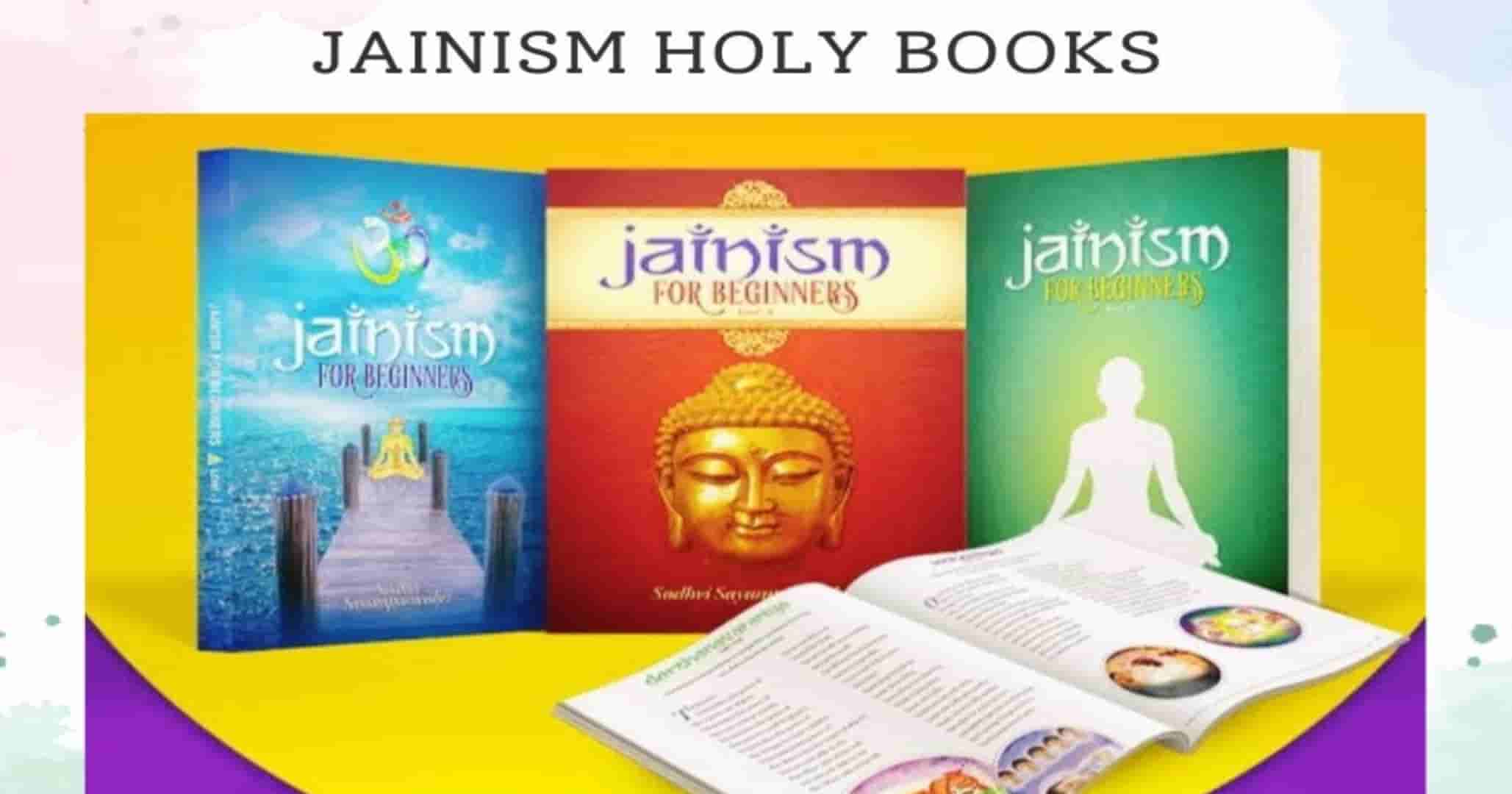The holy book of Jainism is called the "Jain Agamas" or "Jain scriptures." These texts are considered the authoritative scriptures of Jainism and are attributed to Mahavira, the 24th and last Tirthankara (spiritual teacher) of Jainism.
The Holy Book of Jainism "Agamas"
The Jain Agamas consist of a collection of texts that cover various aspects of Jain philosophy, ethics, rituals, and practices. They provide guidance on living a righteous and spiritually enlightened life, emphasizing non-violence (ahimsa), truthfulness (satya), non-stealing (asteya), chastity (brahmacharya), and non-attachment (aparigraha).
The Jain Agamas are written in an ancient language called Ardhamagadhi, which was prevalent in ancient India. They are composed of two main categories of texts: the Angas and the Upangas.
The Angas are the primary canonical texts, consisting of twelve sections or divisions. These include the Acharanga Sutra, Sutrakritanga Sutra, Sthānānga Sutra, Samavayanga Sutra, Vyakhyaprajnapti or Bhagavati Sutra, Jnatadharmakathah, Upasakadasah, Antakr̥ddaśāh, Anuttaraupapatikadasah, Prasnavyakarana, Vipakasruta, and Dr̥ṣṭivāda.
The Upangas are the supplementary texts that provide further explanations and commentaries on the teachings found in the Angas. They include texts such as the Chhedasūtras, Dhavala, Nandi, Anuyogadvarasutra, Prasnavyakaranani, Vipakasruta, and Drstivada.
These texts form the foundation of Jain religious literature and are highly revered by Jain communities worldwide. They are studied, recited, and discussed by Jain monks, scholars, and followers to gain spiritual insight and cultivate a deeper understanding of Jain principles and practices.
What are 12 Angas of Jainism?
 |
| Jain Symbol |
The twelve Angas are the primary texts or divisions of the Jain Agamas, which are the sacred scriptures of Jainism. These Angas are considered the oldest and most authoritative texts in the Jain tradition. Here are the twelve Angas:
Ācārānga Sūtra (Ācharānga Sūtra): This text deals with the conduct and behavior to be followed by Jain monks, nuns, and lay followers.
Sūtrakṛtāṅga Sūtra: Also known as the Sūtrakritānga Sūtra, this text contains aphorisms on various subjects, including karma theory, ethics, and monastic discipline.
Sthānānga Sūtra: This text focuses on the analysis of space and location and provides guidelines for the establishment and maintenance of Jain monastic institutions.
Samavāyāṅga Sūtra: This text explores the nature of substances and their relationships, including the concept of samavāya (inherence).
Vyākhyāprajñapti (Bhagavati Sūtra): This text comprises explanations and discussions on various philosophical and metaphysical topics, including the nature of reality and the doctrine of karma.
Jñātādharmakathāh: This text contains stories and narratives about Jain monks, nuns, and laypeople, illustrating their ethical and spiritual virtues.
Upāsakadaśāh: This text provides guidelines and instructions for Jain householders, including rules of conduct and religious practices.
Antakṛddaśāh: Also known as Antakr̥ddaśāh, this text deals with the nature of death and the rituals associated with death and funeral rites.
Anuttaraupapātikadaśāh: This text discusses the various types of rebirths and the realms of existence in the cycle of birth and death.
Praśnavyākaraṇa: This text consists of questions and answers on various philosophical and ethical subjects.
Vipākaśruta: This text focuses on the doctrine of karma and its consequences, discussing the ways in which past actions bear fruit in the present and future.
Dr̥ṣṭivāda: This text explores the Jain theory of perception and knowledge, discussing the nature of direct and indirect perception.
These twelve Angas, along with other texts known as Upangas, form the foundation of Jain scriptural literature. They provide guidance on ethical conduct, philosophical teachings, and spiritual practices for followers of Jainism.
How Many Holy Books are There in Jainism?
In Jainism, there is no single holy book that encompasses all the teachings of the religion. Instead, Jainism has a vast collection of scriptures known as the Jain Agamas. These Agamas consist of numerous texts that serve as the canonical literature for Jainism.
The Jain Agamas are divided into two main categories: the Angas and the Upangas. The Angas are the primary texts and are further divided into twelve sections or divisions. The Upangas are supplementary texts that provide additional insights and commentaries on the teachings found in the Angas.
While the specific number of texts may vary slightly between different Jain sects and traditions, the total number of Agamas is generally accepted to be 45. These include the 12 Angas and various Upangas. The Angas are considered the core texts, and the Upangas provide further elaborations and interpretations.
It's important to note that the Jain Agamas were orally transmitted for centuries before being written down. Over time, some of the texts were lost, and the surviving texts were written in Ardhamagadhi, an ancient language of India.
Therefore, while there is a significant collection of scriptures in Jainism, it is more accurate to refer to the Jain Agamas as the holy texts rather than a single book. These Agamas are highly regarded and serve as the authoritative source of knowledge for Jain philosophy, ethics, rituals, and practices.
Which is the First Book of Jainism?
The first book or text of Jainism is believed to be the Ācārānga Sūtra, also known as the Ācharānga Sūtra or the Sūtrakritānga Sūtra. It is one of the twelve Angas, which are the primary texts of the Jain Agamas.
The Ācārānga Sūtra is attributed to Mahavira, the 24th Tirthankara of Jainism, who is considered the founder of the current Jain tradition. The text focuses on the code of conduct, ethical principles, and spiritual practices to be followed by Jain monks, nuns, and lay followers.
The Ācārānga Sūtra provides detailed guidelines on aspects such as non-violence (ahimsa), truthfulness (satya), non-stealing (asteya), celibacy (brahmacharya), and other principles of Jain ethics. It also discusses the nature of the soul (jiva), karma, and the process of spiritual liberation (moksha).
While the exact dating of the Ācārānga Sūtra is uncertain, it is considered one of the earliest and foundational texts of Jainism. It is highly revered and forms an essential part of the Jain scriptural tradition, serving as a fundamental guide for moral and spiritual living in the Jain faith.
Who Wrote Jain Books?
The Jain scriptures, known as the Jain Agamas, are attributed to the omniscient beings called "Kevalis" or "Jina." In Jainism, a Kevali is an enlightened being who has attained infinite knowledge and spiritual liberation (moksha).
According to Jain belief, the Kevalis possess perfect knowledge of the universe, including its past, present, and future. They have a deep understanding of the nature of reality, the principles of karma, and the path to liberation. It is believed that these enlightened beings deliver discourses and teachings, which were later compiled and recorded by their disciples and followers.
The authorship of the Jain Agamas is attributed to Mahavira, the 24th Tirthankara of Jainism. Mahavira is considered the last and most recent Tirthankara, and he is believed to have compiled and organized the existing Jain teachings and scriptures during his lifetime, around the 6th century BCE.
However, it is important to note that the Jain Agamas were originally transmitted orally before they were written down. They were passed down from generation to generation through a tradition of oral recitation and memorization. The texts were eventually transcribed into writing in the centuries following Mahavira's time.
Therefore, while Mahavira is considered the compiler and organizer of the Jain Agamas, the actual process of recording and documenting the texts was undertaken by his disciples and subsequent followers. The Jain community has preserved and revered these scriptures as their sacred texts throughout history.





